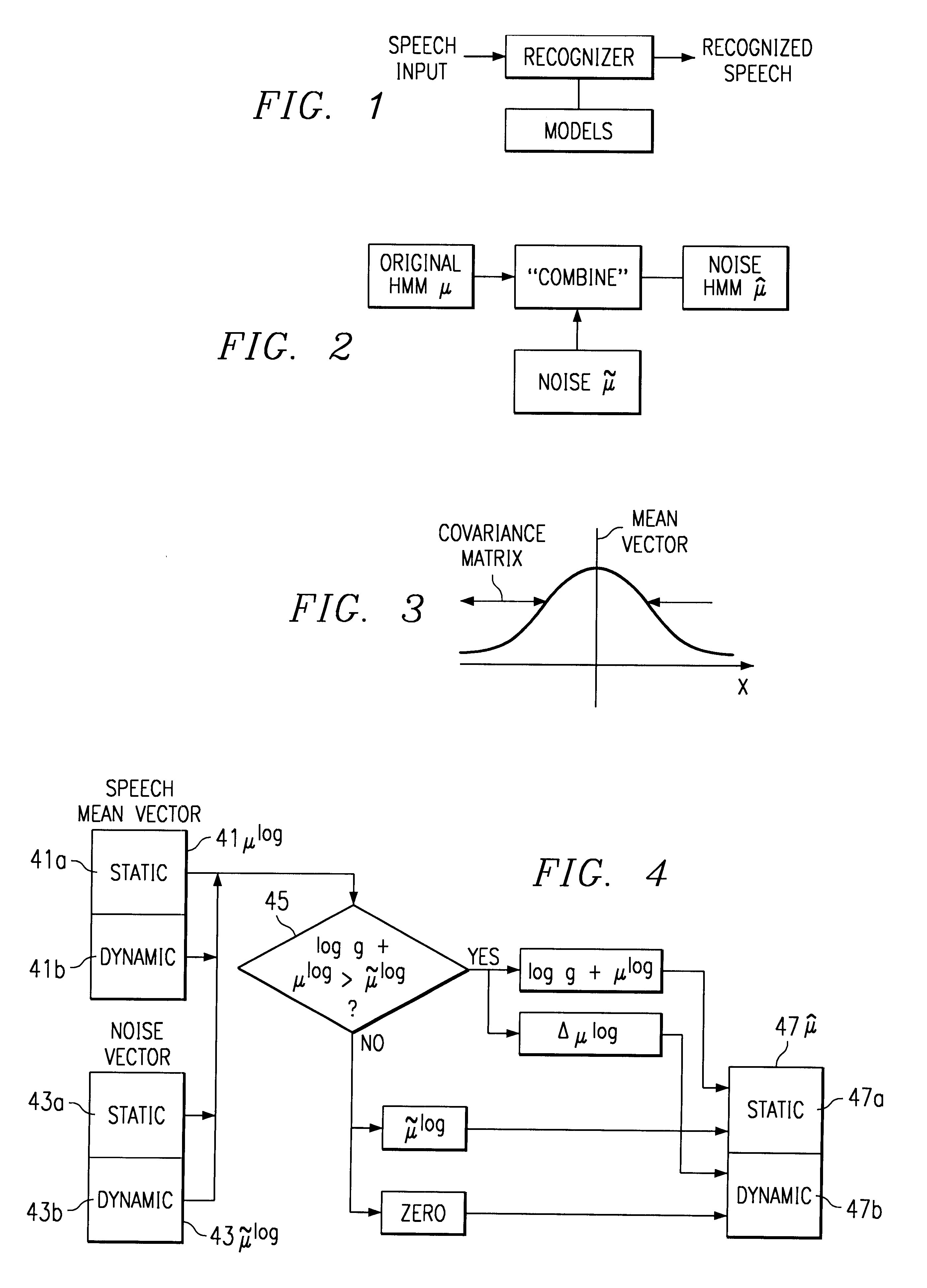Log-spectral compensation of PMC Gaussian mean vectors for noisy speech recognition using log-max assumption
a technology of noise speech recognition and log-max assumption, applied in speech analysis, speech recognition, instruments, etc., can solve the problems of affecting the recognition performance of speech, affecting the quality of speech recognition,
- Summary
- Abstract
- Description
- Claims
- Application Information
AI Technical Summary
Benefits of technology
Problems solved by technology
Method used
Image
Examples
Embodiment Construction
In accordance with the present invention a new and third log-max assumption is made that substantially reduces the processing requirement with no conversion between log and linear scale and yet does not significantly affect the outcome.
It is pointed out for the static parameter that:
(log(g exp(a)+exp(b)).apprxeq.log g+a if a>>b (16)
and
log(g exp(a)+exp(b)).apprxeq.log b if b>>a (17)
Under log-max approximation teaching herein this is applied to our problem where a is speech mean vector--and b is noise mean vector--; Eq-14 can be approximated by:
.mu..sub.l.sup.log =max (log g+.mu..sub.i.sup.log,.mu..sub.i.sup.log) (18)
This transformation is performed totally in the log domain and hence is fast, though less accurate. It can be shown that the maximum error compared to log-add is log(2).
Taking the time derivative of Eq-18 for the dynamic parameter, we obtain: ##EQU9##
If we use the assumption Eq-8 (noise is stationary), then the result is even simpler: ##EQU10##
Referring to FIG. 4 there is...
PUM
 Login to View More
Login to View More Abstract
Description
Claims
Application Information
 Login to View More
Login to View More - R&D
- Intellectual Property
- Life Sciences
- Materials
- Tech Scout
- Unparalleled Data Quality
- Higher Quality Content
- 60% Fewer Hallucinations
Browse by: Latest US Patents, China's latest patents, Technical Efficacy Thesaurus, Application Domain, Technology Topic, Popular Technical Reports.
© 2025 PatSnap. All rights reserved.Legal|Privacy policy|Modern Slavery Act Transparency Statement|Sitemap|About US| Contact US: help@patsnap.com



